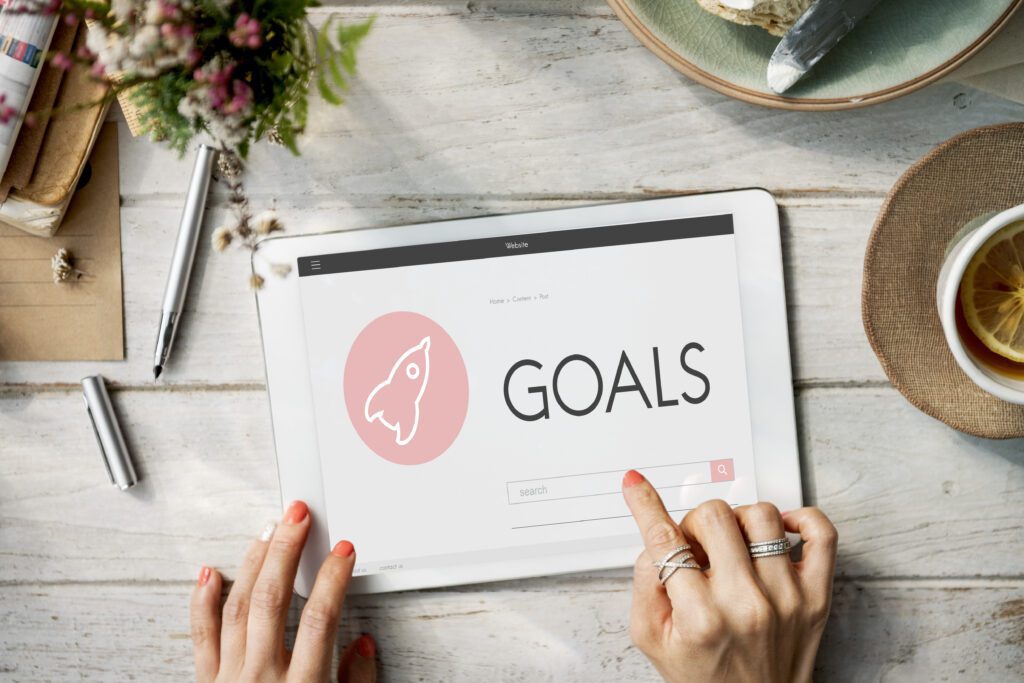How to be More Productive: 5 Tips for Productivity in the Workplace

Struggling to feel productive? Use these powerful strategies to improve your workplace productivity and get more done in less time (and with less stress).
We’ve all been there.
Tireless sprinting on that hamster wheel that just doesn’t seem to move anywhere fast?
Sometimes it can become all too overwhelming. That feeling like we have way too much to do with way too little time.
Maintaining a high level of focus and productivity throughout the day can feel like a job in itself – but you don’t have to stress.
Hooray is here to make sure that you don’t feel discouraged and depleted at the end of your working day.
If you’re an employee or employer interested in learning how to be more productive at work, then you’ve come to the right place.
If you’re looking for a new job or just in need of a change check out our latest vacancies here
Carry on reading to learn some rock-solid tips you can put into play to channel your focus and defeat your to-do list. Learn valuable strategies to help you manage your time more effectively and leave your working day feeling motivated like the well-oiled work machine you really are!

5 Productivity Tips for the Workplace
Prioritise Tasks and Protect Your Time
First things first. We are bringing it back to the basics. It’s simple but effective.
Prioritisation is your secret weapon.
Whether you’re a business owner juggling multiple tasks or an employee with a mounting to-do list, prioritising your tasks is a must.
You undoubtedly have a lot on your plate, which can feel overwhelming. However, even though someone could be doing a lot of things, it doesn’t necessarily mean they are being productive.
Achieving maximum workplace productivity is key to our working schedule. Prioritising your tasks not only helps manage that feeling of being overwhelmed but also ensures you focus on the most important activities, leading to greater efficiency and productivity.
By prioritising your tasks, you can manage your time more effectively and ensure you’re working on what truly matters. This approach not only enhances your efficiency but also reduces stress and helps you achieve better outcomes.
Remember, working smarter—not harder—is the way forward and will help you to be more productive in the workplace.
If you’re struggling to prioritise your tasks, techniques such as the ‘Priority Matrix’ can help distinguish between urgent and non-urgent tasks. This can help you in making strategic decisions about where to invest your precious time and energy.
Here are some examples of different Priority Matrix to give you some idea:

The Eisenhower Decision Matrix
The Eisenhower Decision Matrix, also known as the Urgent-Important Matrix, is a tool used to help prioritise tasks by urgency and importance. It is divided into four quadrants.
The matrix helps you focus on what truly matters and manage your time more effectively by categorising tasks based on their urgency and importance.

The 3X3 Prioritisation Matrix
The 3×3 Prioritisation Matrix is a tool used to categorise tasks or projects based on two key criteria: impact and effort. It helps you prioritise work by evaluating how much effort a task requires and how much impact it will have.
The matrix is divided into nine squares (3×3 grid). This Matrix helps you focus on tasks that offer the best return on your time and effort, ensuring you spend your energy on what matters most.
The ABC Analysis
The ABC Analysis is a method used to categorise tasks, inventory, or other items based on their importance or value. It is often used in inventory management and time management to prioritise resources and focus efforts more effectively. The analysis divides items into three categories: A Category (High Importance), B Category (Moderate Importance) and C Category (Low Importance).
This method helps you focus your attention on the most valuable tasks or items, ensuring that the majority of your time and resources are spent on what will have the greatest impact.

Eat The Frog
The Eat the Frog technique comes from the famous Mark Twain, “If it’s your job to eat a frog, it’s best to do it first thing in the morning.”
According to this method, you tackle the most important, complex, or difficult task (or “eat the frog”) first. Then, you move on to the simpler tasks.
For more prioritisation techniques check out the blog on Indeed here
Don’t forget to protect time in your schedule to complete your tasks. This approach helps you stay focused on what truly matters (without distractions) and reduces the tendency to procrastinate.

Set Clear Goals
Defining clear, achievable goals for your day is essential for maintaining focus and productivity in the workplace. Clear goals will give you a sense of direction and purpose, helping you prioritise your efforts and make the most of your time. Ensure your goals are realistic and achievable, as this is key to staying motivated.
A great way to determine what is realistic and achievable is to listen to yourself.
Look at your to-do list or your goals and notice how they make you feel.
If you feel tense, you may have too many tasks. If you feel overly confident that you can complete everything quickly, you might have too few.
What you’re looking for is that Goldie Locks moment. Aim for a balance where you feel challenged but not overwhelmed. Listen to your body; it will tell you what is achievable.
When expressing your goals, use positive and affirmative language. This approach helps in reinforcing a constructive mindset, making your goals feel more attainable and motivating you to achieve them.
Don’t forget to keep track!
Keep track of your progress and celebrate small achievements along the way. Having detailed goal descriptions and establishing measurable milestones is crucial.
Specific goals with clear criteria for success allow you to track your progress and make adjustments as needed. This also provides a sense of accomplishment as you meet each milestone, boosting your motivation!
Breaking larger projects into smaller, manageable tasks also helps maintain momentum and prevents feeling overwhelmed. Smaller tasks are easier to tackle and complete, providing frequent opportunities for success and keeping you motivated throughout the project.
Setting clear goals ensures you have a roadmap for your day and keeps you on track. This structure not only enhances your efficiency but also reduces stress by providing a clear path to follow, helping you achieve your objectives more effectively.

Minimise Distractions in the Workplace to be more Productive
Okm so you know what needs to be priorited TICK and you’ve got a list of goals you need to work towards TICK.
So what’s missing?
Let me paint a familiar scene…
You’ve set your goals, prioritised your tasks, and you’re ready to conquer the day. You sit down at your desk with a clear plan in mind, feeling highly motivated and determined. The to-do list in front of you is well-organised, and you know exactly what needs to be done.
As you start working, your email notification pings. It’s just a quick glance, you tell yourself, but soon you find yourself responding to emails that could have waited.
Returning to your task, you hear your phone buzz with a social media update. Curiosity gets the better of you, and a quick check turns into a few minutes of scrolling.
Determined to refocus, you close unnecessary tabs and silence your phone. Just as you regain your momentum, a colleague stops by for a quick chat about that spreadsheet that needs to be done for next week. It’s useful but not urgent, and it eats into your valuable work time.
Back at your desk, you try to dive into your work again. However, the noise from the office chatter and the constant hum of activity around you make it hard to concentrate. Your mind wanders, and before you know it, you’ve lost precious minutes.
How to Minimise Distractions at Work?
These small distractions add up, turning what should be a productive day into a struggle to stay focused. While occasional distractions are inevitable, consistent disruption has severe implications for employee performance.
A recent survey found that employees spend, on average, 2.5 hours per day dealing with interruptions. Other research shows that it takes an average of 23 minutes and 15 seconds for an employee to refocus on a task after a distraction.
So, what can you do to minimise these disruptions at work?
First, identify common distractions and create strategies to avoid them.
This can include setting specific times for checking emails or using noise-cancelling headphones.
When tackling important and urgent tasks, close every unnecessary tab and quit every application so the only thing you have up is what you’re working on. Minimising distractions is key to maintaining a high level of focus and workplace productivity.

Take Regular Breaks
It’s easy to skip breaks when you feel snowed under, but taking breaks is essential to staying productive in the workplace. Incorporate short breaks into your work routine. Techniques like the Pomodoro Technique, which encourages regular breaks, can help maintain high productivity levels. Remember, you are far more productive when you aren’t burnt out!
Use Tools for Workplace Productivity
Firstly, welcome to the beautiful and sometimes overwhelming world of technology and AI. There are many tools available, including project management software, to-do lists, and time-tracking apps to help you stay organised and efficient. Check out a list of some highly recommended ones here:
- Microsoft To Do: A task management app that integrates with Microsoft 365, allowing you to manage tasks across your devices.
- Remember The Milk: A smart to-do app that helps you manage tasks and reminders efficiently.
- OneNote: A Microsoft app for creating and organizing digital notes, which integrates with other Microsoft Office tools.
- Notion: A multi-functional tool for note-taking, task management, and project collaboration.
- Scribe: a productivity tool designed to simplify the process of creating step-by-step guides, documentation, and tutorials
- Forest: A productivity app that helps you stay focused by planting virtual trees that grow as you work.
- Freedom: A website and app blocker that helps you eliminate distractions by blocking specific websites and apps during focus sessions.
- Cold Turkey: A tool that blocks distracting websites and apps for set periods to help you focus on your work.
- Trello: A visual tool for organizing tasks and projects using boards, lists, and cards.
- Asana: A project management platform that helps teams track work, assign tasks, and manage deadlines.
- Monday.com: A customizable platform for project management, team collaboration, and workflow automation.
There are also AI tools to help you stay organised and efficient, for example, ‘Motion’ is an app that can help organise your day so you don’t have to. Embracing these tools can streamline your workflow and enhance your workplace productivity.
Conclusion
By implementing these tips, you can improve your workplace productivity and get more done with less stress. Remember, productivity is not about working harder, but about working smarter. Focus on prioritising tasks, setting clear goals, minimising distractions, taking regular breaks, and using productivity tools. Here’s to a more productive and less stressful workday!
But sometimes, the root cause of low productivity isn’t just about the strategies you’re using—it’s about the job itself. If you find that no matter what you do, you’re still struggling to stay motivated, it might be time to consider a change.
At Hooray Recruitment, we understand how important it is to find a role that truly aligns with your passions and strengths. If your current job isn’t fulfilling you or allowing you to be your best self, don’t settle for less. Explore new opportunities that could reignite your drive and enthusiasm.
Ready for a fresh start? Check out our latest vacancies here and let us help you find a job that not only boosts your productivity but also brings you joy and satisfaction. Your dream job could be just a click away!